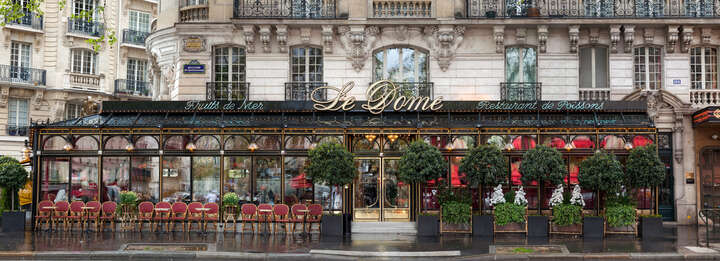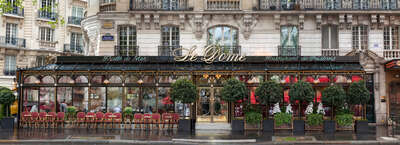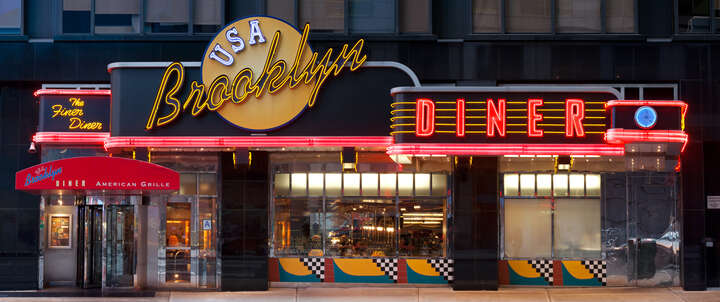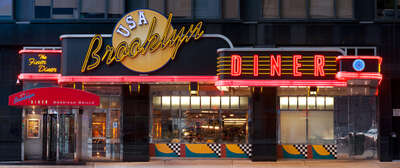Introduction
James & Karla Murray
In the turbulent heart of the city these colourful rows of New York shops lure us down to street level. Vivid expressions of the city’s cultural and religious diversity, each façade, with its adverts and its special offers, tells a unique story. The New York artistic duo James and Karla Murray embraced these small, vibrant, witnesses of our time, shooting them with a 35mm analogue camera. Some of the shops are age-old institutions, such as the Yonah Schimmel Knish bakery in Manhattan or the Jackson Heights florist in Queens, while others have emerged within the last few years. All are battling the current financial situation and the multiplication of overzealous city ordinances.
A traditional butcher’s shop fights for its very existence because it can no longer hang meat in the show window, as it has always done. The most valuable asset of each business is its combination of tradition and virile adaptability. All clamour for attention in their own way, but none impose on the space of the others. The scrum of advertising banners over glass facades can be described as a vibrant democracy, one that is continually renewed. Each shop can determine for itself the price of its special offers, but it may not take away from others the right to do the same.
The images are not depictions of perfection – some of the walls are cracked, some of the awnings have been bleached by the sun, and some of the signs are bent or broken. This serves only to make the scenes more appealing, however. It is worth slipping into the role of casual wanderer, taking in the different offers one after another. One not only discovers the subtleties of these New York bazaars, but also gains a impression of the rhythm of the individual streets. Their documentation was more than simply photographic: By carefully selecting the stores, recording interviews with their owners, taking individual portraits and then stitching them together into panoramas free from any obstructions, we are given a much greater impression of the whole.
The character of the project and its essence of preservation is clearly reflected in the artistic intervention. Our attention is drawn to an element of city life whose very existence is in doubt, a culture defined by tolerance, creative adaption, and the ability to live alongside one another. Large chain stores with uniform brands are taking over the streets, threatening the spirit and cultural diversity of individual neighbourhoods. It is this spirit and diversity, however, that produces the unique atmosphere of the city streets. It’s existence is not only essential to the colourful sidewalks of New York, but to every city around the world.
Stephan Reisner
Bio
James T. Murray
| 1964 | Born in Bridgeport, CT, USA |
| Lives and works in New York and Miami |
Karla L. Murray
| 1968 | Born in New York, USA |
| Lives and works in New York and Miami |
Collections
Smithsonian Center for Folklife and Cultural Heritage, Ralph Rinzler Folklife Archives and Collections, Washington, DC, USA
New York Public Library, Photography Collection/ Miriam and Ira D. Wallach, Division Of Art, Prints & Photographs, New York, NY, USA
Publications
The Source
City Magazine
Rolling Stone
Stern
Time Out New York
Die Zeit
Der Spiegel
Exhibitions
Solo Exhibitions
| 2013 | New York Nights, Clic Gallery, New York, USA |
| 2012 | Store Front, Fotogralerie im Blauen Haus, Munich, Germany |
| 2011 | Store Front II, Clic Gallery, New York, USA |
| 2009 | Store Front, Clic Gallery, New York, USA |
| 2008 | Counter/Culture: The Disappearing Face of Brooklyn’s Storefronts, Brooklyn Historical Society, New York, USA |
Group Exhibitions
| 2010 | Clic Gallery, New York, USA |
| 2001 | Up on the Roof: The Culture of New York City Rooftops, The New-York Historical Society, New York, USA |














